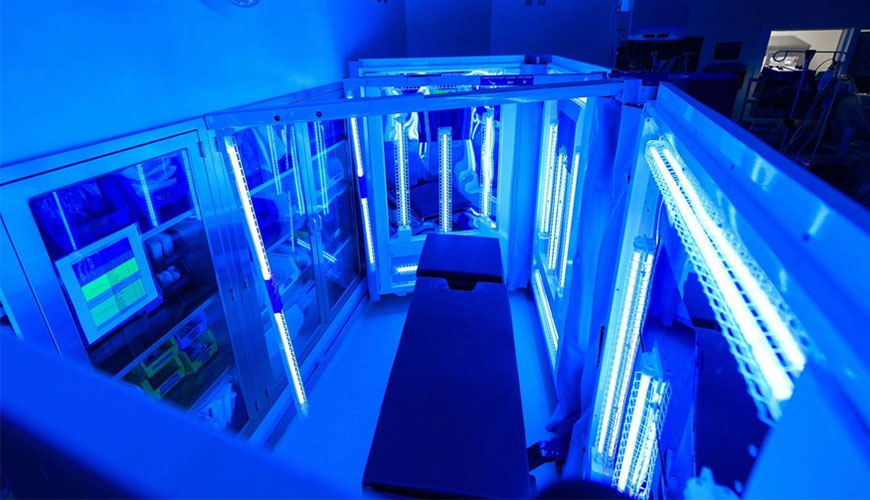

EUROLAB laboratory provides testing and compliance services within the scope of ISO 4892-2 standard. This part of the ISO 4892 standard, developed by the International Organization for Standardization (ISO), exposes samples to xenon arc light in the presence of moisture to reproduce the corrosion effects (temperature, humidity, and/or wetting) that occur when materials are exposed to daylight in real end-use environments or in real end-use environments. specifies the methods of exposure.

Sample preparation and evaluation of results are covered in other International Standards for certain materials. General guidance is given in ISO 4892-1. Xenon arc exposures of paints and varnishes are described in ISO 11341.
ISO 4892-2 is a standard that specifies test conditions that replicate the effects of weathering on plastic materials through the use of moisture and xenon arc light. Although ISO 4892-3 is very similar to this method, it differs significantly in that it uses UV fluorescent lights as the illumination source. The focus of ISO 4892-2 is the nature of the light used and all the conditions that must be met in accelerated aging.
In fact, by using suitable filters, it is possible to reproduce the characteristics of daylight passing through a glass window or exposed to direct sunlight. In fact, by combining the effects of these filters with apparatus conditions, it is possible to simulate end-use conditions to have a better assessment of the material's performance over time.
A xenon arc equipped with filters is used to simulate the relative spectral radiation of daylight in the ultraviolet (UV) and visible regions of the spectrum. Samples are exposed to varying levels of light, heat, relative humidity and water under controlled environmental conditions.
The light source will consist of one or more quartz sheathed xenon arc lamps emitting radiation from below 270 nm in the ultraviolet through the visible spectrum and into the infrared. To simulate daylight, filters will be used to remove short wavelength UV radiation.
Filters to minimize radiation at wavelengths shorter than 310 nm will be used to simulate daylight through window glass. Additionally, filters that eliminate infrared radiation can be used to prevent unrealistic heating of test samples, which can cause thermal degradation that is not experienced during outdoor exposures.
Among the services provided by our organization within the framework of material testing services, there are also ISO 4892-2 standard tests. Do not hesitate to contact our laboratory EUROLAB for your testing and certification requests.
To get an appointment, to get more detailed information or to request an evaluation, you can ask us to fill in our form and reach you.